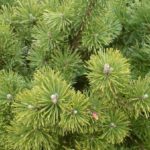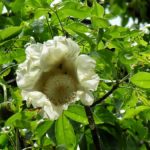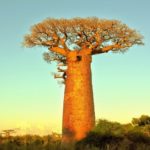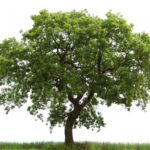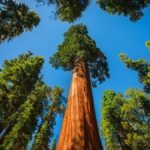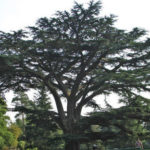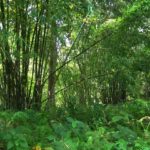Long-liver Tree
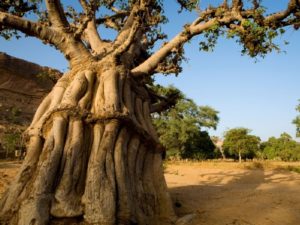 Baobab is an amazing tree in many ways, but it is also the most long-lived tree on our planet.And there is strong scientific evidence for this in recent years. Longevity trees are not so common on earth. At the same time, they grow on all continents and in all climatic zones. So in the middle zone, where favorable climatic conditions, several species of trees are distinguished by longevity.
Baobab is an amazing tree in many ways, but it is also the most long-lived tree on our planet.And there is strong scientific evidence for this in recent years. Longevity trees are not so common on earth. At the same time, they grow on all continents and in all climatic zones. So in the middle zone, where favorable climatic conditions, several species of trees are distinguished by longevity.
Oak, maple, beech have an average life expectancy of 300 to 500 years, spruce grow up to 350 years, pine up to 600 years, and larch can live up to 900 years.
In warmer climates, trees live even longer. Such is the evergreen cypress, whose life span can exceed a thousand years, the most famous of them is the Zoroastrian sarv, which, according to scientists, is about 4000 years old. American sequoia is one of the longest-lived trees. Sequoia General Sherman, which is 2700 years old, is growing in California National Park. In addition, it is a real giant, its height is 84 meters, and its girth at the ground is 31 meters.
But it is not surprising and in a very hot climate there is a tree whose life span is thousands of years. This is baobab, or scientifically Adalsonica is pollen. This is not quite an ordinary tree, which we are accustomed to, grows in Africa and Madagascar. The living conditions of these trees are extreme. The short rainy season and long hot summers made baobab a unique plant. During tropical showers, from the huge amount of rainfall, the lowlands of the savannah turn into real lakes. But water in the soil is not stored, but quickly evaporates under the scorching rays of the sun. Therefore, ordinary trees, requiring constant replenishment of moisture from the soil, do not survive there.
For many millennia, Baobab, unlike ordinary plants, has adapted for itself to make supplies of life-giving moisture. In a short time, when tropical downpours occur, like a powerful pump, it sucks in water, accumulating it in its porous trunk for several cubic meters. In the rainy season, its wood absorbs moisture like a sponge and becomes so soft that even with a slight pressure on the trunk, a dent immediately appears.
Savingly consuming this supply, baobabs safely survive the rest of the time until the next rains. True, in the dry season they stand with completely bare clumsy branches, as if roots up. And, nevertheless, in spite of such a meager rations, baobabs grow to enormous size. Their height reaches 20-25 meters, and the circumference of the trunk up to 9-10 meters. Of the currently growing, one of the most famous Baobab giants is Sunland Baobab on the Sanland Farm in Limpopo province in South Africa. The diameter of this giant is more than 10 meters, the height is about 20 meters, the diameter of the crown is more than 30 meters, and the trunk circumference is almost 34 meters.
This giant baobab is also notable for the fact that its trunk is equipped with a “Baobab Tree Bar”, that is, a “Bar in a Baobab”. The bar consists of two rooms: the bar itself, which can accommodate up to a dozen visitors at once and a wine cellar.
And this is not the limit, in the Guinness Book of Records the largest was considered baobab with a trunk girth of 54.5 meters, which now, unfortunately, is no longer there. Today, the largest baobab grows in Tanganyika. This is a huge tree whose age is about 5,000 years. Its height is 22 meters, the trunk circumference below 47 meters, and the crown circumference 145 meters.
The fact that it is African baobab that can be considered the most long-lived plant is now scientifically proven, although it is rather difficult to determine the age of this tree. The age of the trees is usually determined by counting the annual rings. But the baobab does not have such rings. Therefore, the method of radiocarbon analysis, a complex and expensive procedure, is used to determine. But this method has proven itself over large periods of time, from 4 or more thousand years, although in the intervals up to 4 thousand years inaccuracies are possible. According to the results of research by this method, the oldest baobab on earth was growing in Senegal, which has already turned 5170 years old. This baobab is not so big, because over several thousand years it gradually goes into the ground. This is what the oldest tree on earth looks like.
But these witnesses of mammoth habitation are also not eternal, they also die. But even they die in their own way, in a special way. Starting to age, the baobab dries, decreases in size and gradually collapses. Usually there are no traces of outdated baobabs. At the place where the baobab grew, there is not only a stump, but even a pile of wood. The trunk of this tree is porous, and also hollow inside, therefore, dying, it simply settles and crumbles in place on a pile of fibers, gradually turning into dust, which the wind then carries.



